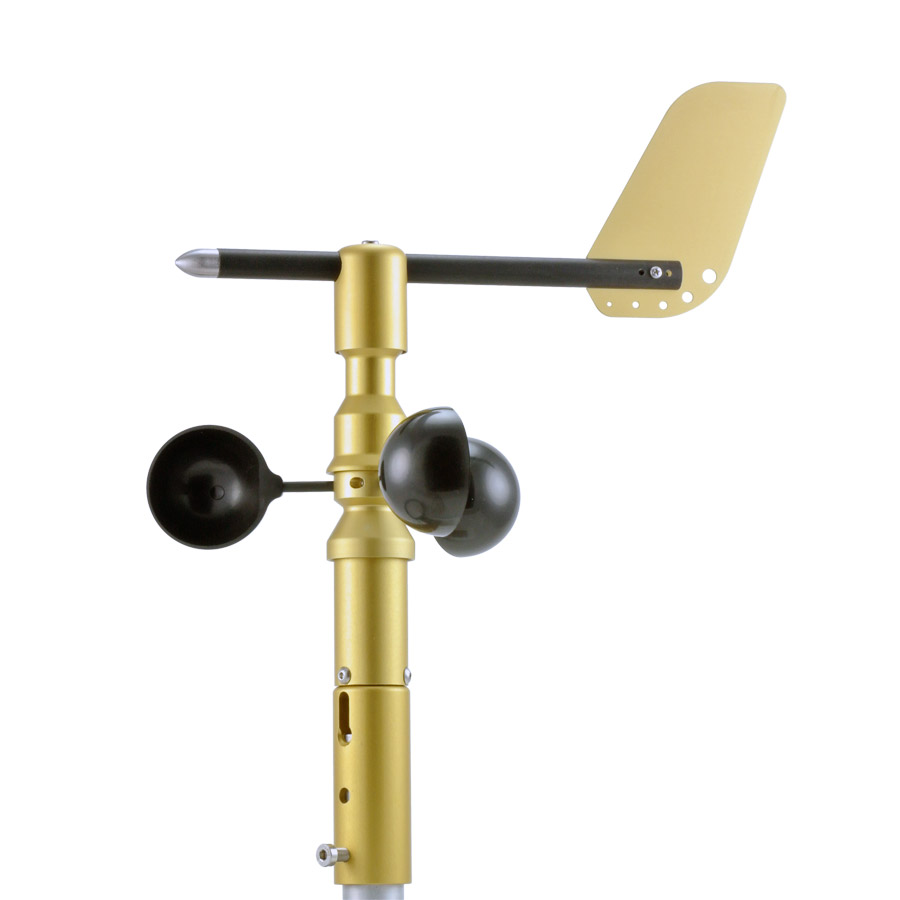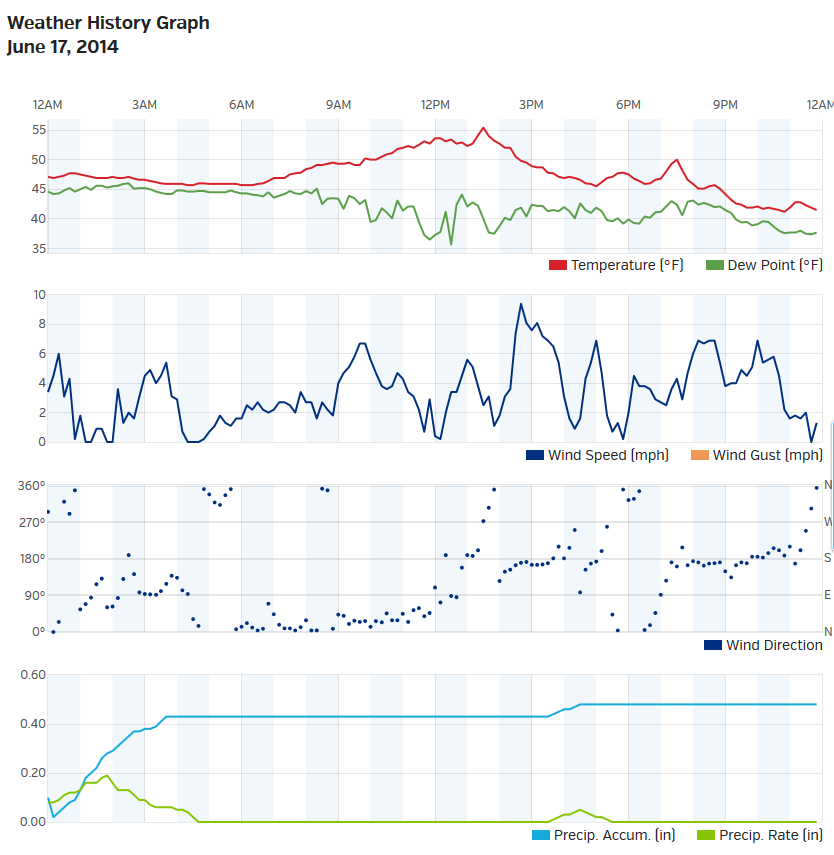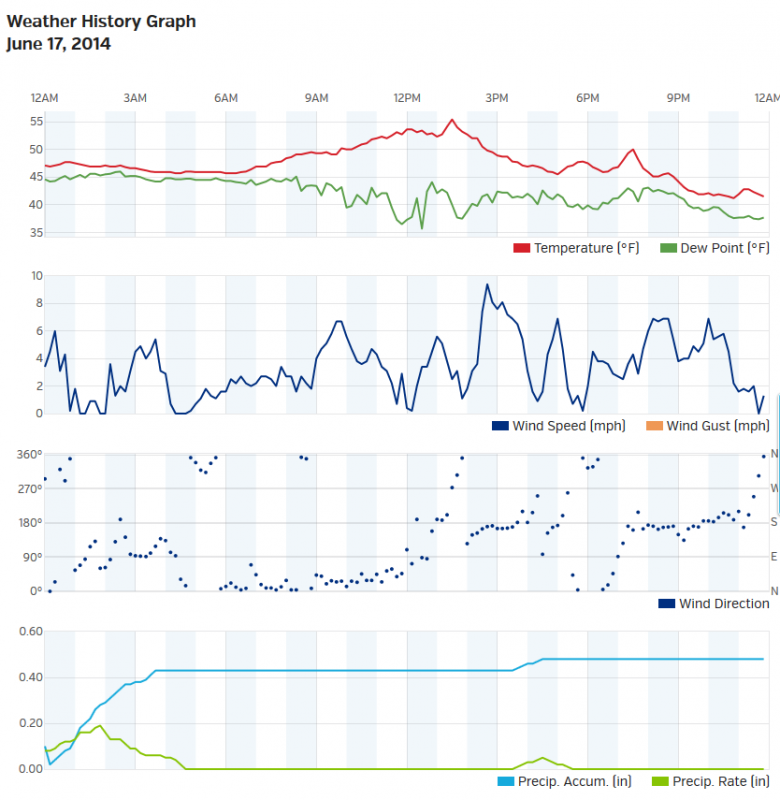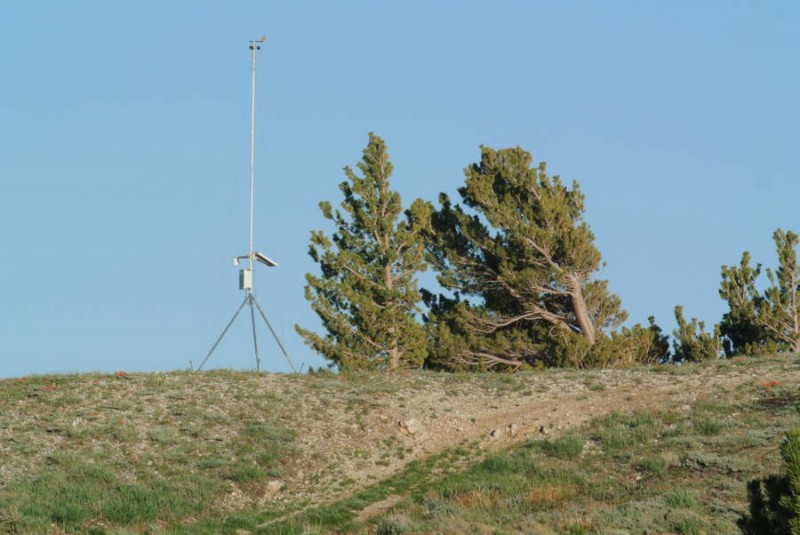Simple analog sensors require the host device to perform a number of calculations to correctly scale the inputs, check for errors, and convert to usable measurement units. Similarly, sensor measurements are typically averaged over several seconds, minutes, or hours in order to present useful measurements of conditions and trends. Instantaneous measurements can be misleading or jump around too much to be useful and must be averaged and limit controlled to minimize the inherent noise.
All of these calculations put a burden on the host device and the software developer. For applications such as PLCs, embedded devices, and computer software applications, analog sensors require the programmer to have an in-depth knowledge of sensor output, measurement characteristics, and weather parameters.
With an ever-present focus to keep things simple and user-friendly, Dyacon WSD‑1 and TPH‑1 present usable digital data to the host device. For example, wind speed can be used directly by the developer without the need to count pulses or scale the voltage and then test, average, and convert the output.
Dyacon WSD-1 and TPH-1 go a step beyond other digital sensors in that both sensors provide additional calculated values:
TPH-1 gives temperature, pressure, and humidity measurements. Output values have been sampled multiple times, checked, and averaged. As of the latest firmware version, a value for a 3 hour barometric pressure trend is also given.
WSD-1 provides wind speed and direction data. Similarly, these measurements are sampled multiple times, checked, and averaged to provide a current measurement. Extended data are now available, which give 2 minute and 10 minute averages of wind speed and wind direction. The 10 minute average is the typical period for weather reports. Other applications may find the current or 2 minute average values to be more practical.
The extended calculations of trend, 2 minute average, and 10 minute average are done along with other data processing on the Dyacon sensors. Since the sensors are specifically optimized for the target measurements, there is no significant power penalty for the extended measurement data. Low power applications, such as environmental data loggers, can reduce their overall system power budget with Dyacon sensors. The data logger can wake, store data, and return to sleep without having to collect multiple analog samples and perform the related calculations.
Creative management of limited power resources is very exciting stuff for us geeks. Oh, what fun! 😉
Eugene





